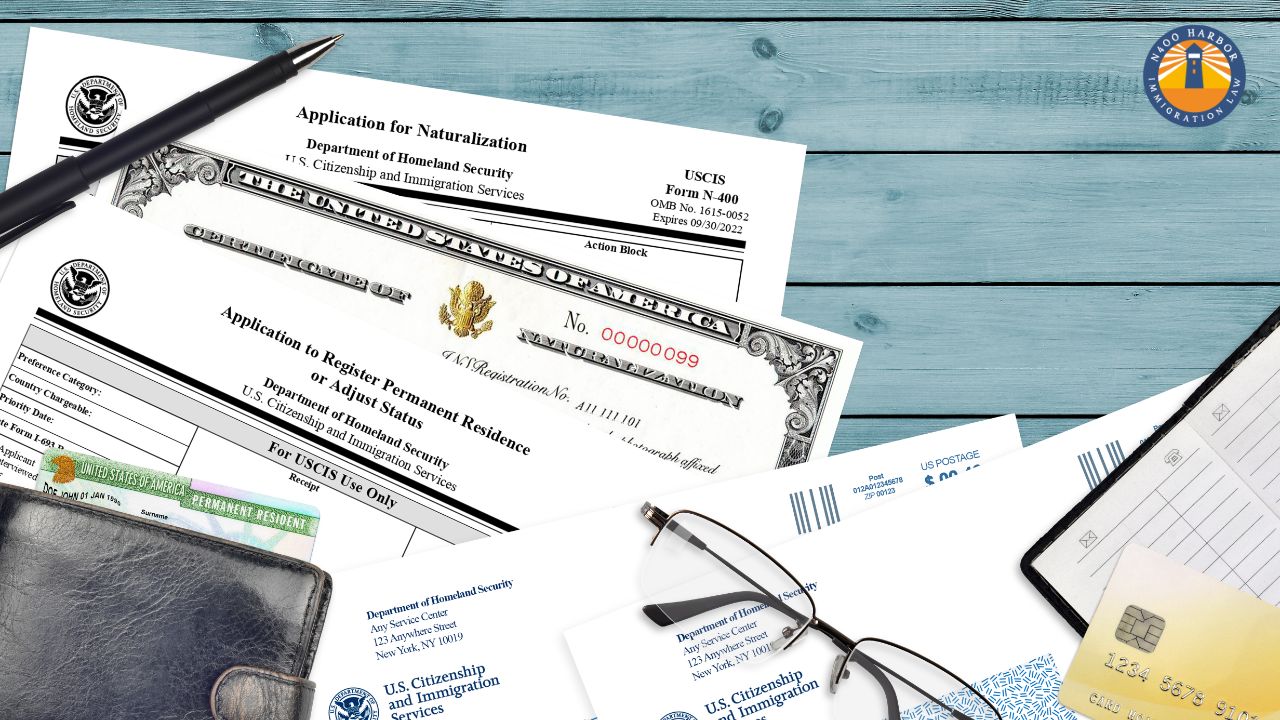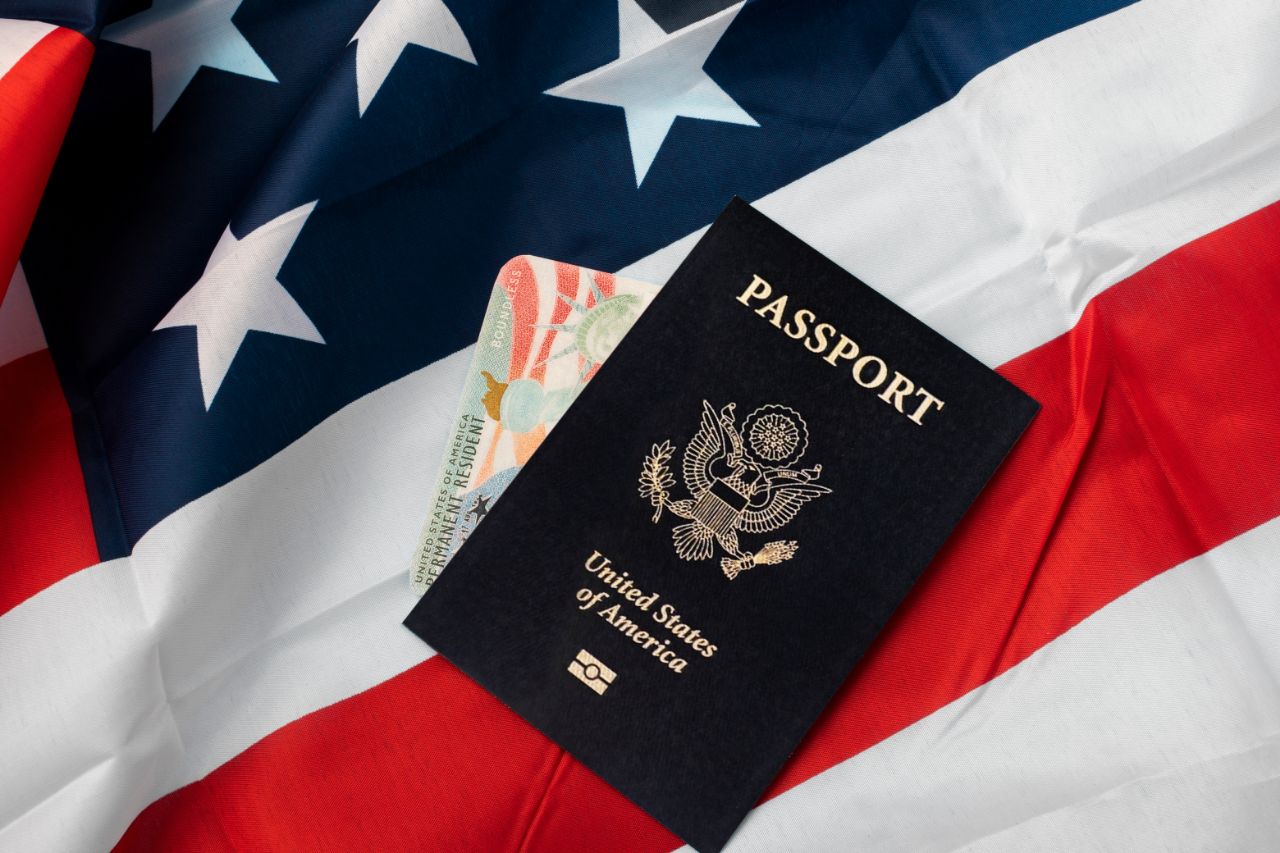
Key Takeaway
Applying for naturalization is a significant step towards becoming a U.S. citizen. Understanding how to properly fill out Form N-400, the Application for Naturalization, is essential to successfully navigate this process. While many applicants are able to fill out Form N-400 on their own, others may benefit from the expertise of a licensed immigration attorney.
Navigating the complex process of applying for naturalization can be daunting. However, understanding how to properly complete Form N-400, also known as the U.S. Application for Naturalization, is a crucial first step. In this short guide, we will go into everything you need to know about Form N-400, providing you with the necessary information along with some recommendations to ensure your journey towards U.S. citizenship is a smooth one.
Understanding Form N-400
First, What Is the Purpose of the N-400 form? The Form N-400, the Application for Naturalization, is an official document used by permanent residents (Green Card holders) who are ready to apply for U.S. citizenship through the process known as naturalization. The process of naturalization typically involves a series of steps, including filling out Form N-400, attending a biometrics appointment, passing a citizenship interview, and taking an oath of allegiance.
Download the latest form N-400 from the USCIS website.
“USCIS allows you to file Form N-400 either online or by mail.”
Eligibility Requirements for Form N-400
Before you proceed with filling out the Form N-400, it is important to ensure that you meet the eligibility requirements for naturalization. These requirements vary based on individual circumstances, but generally, you must:
- Be a permanent resident (have a Green Card) for at least five years, or three years if you are married to a U.S. citizen (the “three-year rule“).
- Be at least 18 years old at the time of filing.
- Have lived within the state or USCIS district with jurisdiction over your place of residence for at least three months prior to filing.
- Demonstrate continuous residence in the United States for at least five years immediately preceding the date of filing Form N-400.
- Show that you have been physically present in the United States for at least 30 months out of the five years immediately preceding the date of filing Form N-400.
- Be able to read, write, and speak basic English.
- Have a basic understanding of U.S. history and government (also known as “civics”).
- Be a person of good moral character.
- You are willing to take the Oath of Allegiance to the United States
Filing Form N-400: Online or By Mail
USCIS allows you to file Form N-400 either online or by mail. If you choose to file online, you must create a USCIS online account. This account will allow you to pay your filing fee online, check the status of your case, receive notifications and case updates, and respond to requests for evidence. However, keep in mind that the online filing option is not available if you are requesting a fee waiver or a reduced fee. In such cases, you must file a paper Form N-400 by mail.
6 Quick tips to fill the Form N400 Correctly:
- Type or print legibly in black ink (if you are using a pen). We recommend using the provided PDF form on a computer.
- If you require additional space to fully answer any section of this application, please utilize the designated area in Part 14. Additional Information. On each additional sheet, include your typed or printed name and A-Number (if applicable) at the top, and indicate the Page Number, Part Number, and Item Number relevant to your response. Don't forget to sign and date each sheet.
- Answer all questions fully and accurately.
- Please refrain from highlighting, crossing out, or writing outside the designated response areas on the Form N-400. If significant corrections are necessary, it's advisable to begin a new form, as recommended by USCIS.
- Provide your A-Number (if any), on the top right corner of each page.
- Your application must be accurately filled out, signed, and submitted. Please ensure that all pages of Form N-400 are included in your filing, even if they are blank. If you submit a photocopy of the original application, it must contain handwritten signatures for all required fields.

The Cost of Filing Form N-400
As of 2024, the government fee for filing an N-400 application is $845, which includes a $760 processing fee and an $85 biometrics fee. It’s crucial to note that these fees are non-refundable, regardless of whether your application is approved, denied, or withdrawn. However, certain applicants may be eligible for a fee waiver or a reduced fee.
A Step-by-Step Guide to Filling Out Form N-400
Part 1: Information About Your Eligibility
In this section, you will indicate how you are eligible to become a U.S. citizen. The eligibility category you select will dictate how you will move forward with your application.
Part 2: Information About You
This section asks for personal information such as name, address, date of birth, gender, and Social Security number. It also includes questions about your eligibility, such as whether you are applying based on your marriage to a U.S. citizen or your military service
Conditions & Exceptions:
Conditional Permanent Residents: If you are a conditional permanent resident, you must file Form I-751, Petition to Remove Conditions on Residence, or Form I-829, Petition by Investor to Remove Conditions on Permanent Resident Status, within 90 days before your conditional permanent resident status expires, unless you can establish good cause and extenuating circumstances for failing to file Form I-751 or Form I-829 during that time period. In most cases, you must have an approved Form I-751 or Form I-829 before we can approve your application for naturalization.
Naturalization Testing and Exceptions: Almost all applicants for naturalization must take a naturalization test to demonstrate that they are able to read, write, speak, and understand English, and that they have a basic knowledge of civics (U.S. history and government). You do not have to take the English reading, writing, speaking, and understanding test, and you can take the civics test in a language of your choice if at the time you file your application:
- You are 50 years of age or older and have been a lawful permanent resident for at least 20 years; or
- You are 55 years of age or older and have been a lawful permanent resident for at least 15 years.
- You are 65 years of age or older and have been a lawful permanent resident for at least 20 years, you may take a simplified version of the civics test.
- You may be eligible for an exception to the English language test or civics test or both if you have a physical or developmental disability or mental impairment. However, you must provide a completed Form N-648, Medical Certification for Disability Exceptions (available at www.uscis.gov/N-648) when you file your Form N-400.
Part 3: Biographic Information
This part of the form collectively gathers biographical information necessary for processing your naturalization application. It’s important to ensure that all biographical information provided is accurate and up-to-date.
Part 4: Information About Your Residence
This section requires you to list all the addresses where you have lived during the past five years, including the dates you lived at each address. You’ll also need to disclose any trips you’ve taken outside the United States during this time period.
Part 5: Information About Your Marital History
If you’re married, you’ll need to provide details about your current spouse, including their name, date of birth, and citizenship status. If you’ve been married before, you’ll also need to list information about your previous marriages.
Part 6: Information About Your Children
If you have any children, you’ll list their names, dates of birth, and current citizenship status. You’ll also need to provide details if any of your children are already U.S. citizens.
Part 7: Information About Your Employment and Schools You Attended
Here, you’ll answer questions about your employment history, education, and any previous arrests or convictions. You’ll also need to disclose any affiliations with organizations or groups, as well as any taxes you owe.
Part 8: Time Outside the United States
In Part 8, if you are applying for naturalization based on the general provision specified under Item Number 1.A. in Part 1 (you have been a lawful permanent resident (LPR) of the United States for at least 5 years), you need to document all trips you’ve made outside the United States within the last five years.
Part 9: Additional Information About You
Your answers to the questions in this Part of Form will help the U.S. Government to determine whether you meet the standards for good moral character. Some of the questions in this Part also relate to national security, your attachment to the principles of the U.S. Constitution, Oath of Allegiance (upon approval), and other requirements for naturalization.
Parts 10 to 15
In these subsequent Parts of your application are designed for other information related to the application process itself and not the eligibility requirements. Some of these include:
- Part 10: Request for a Fee Reduction: You may be eligible for a fee reduction. To qualify for the reduced fee, you must prove your household income is less than or equal to 400% of the Federal Poverty Guidelines, at the time of filing.
- Part 11: Applicant’s Contact Information, Certification, and Signature: You must sign and date your application
- Part 12: Interpreter’s Contact Information, Certification, and Signature: If you used anyone as an interpreter to read the Instructions and questions on this application to you in a language in which you are fluent, the interpreter must fill out this section and sign and date the application.
- Part 13: Contact Information, Declaration, and Signature of the Person Preparing this Application, if Other Than the Applicant: The person who completed your application, if other than the applicant, must sign this section.
- Part 14: Additional Information: Use this space to add information that could not fit in the space provided for answers to questions throughout the form.
- Part 15: Signature at Interview: The USCIS officer will ask you to complete this part at your interview. DO NOT FILL THIS PART.
Hiring a Licensed Immigration Attorney
While many applicants are able to fill out Form N-400 on their own, others may benefit from the expertise of a licensed immigration attorney. An attorney can help you navigate complex situations, avoid common mistakes, and provide reassurance throughout the process. It’s worth considering this option if you are unsure about any aspect of your application or if you have a more complex immigration history.
Next Steps
Applying for naturalization is a significant step towards becoming a U.S. citizen. Understanding how to properly fill out Form N-400, the Application for Naturalization, is essential to successfully navigate this process. Armed with this knowledge, you can confidently take the next steps on your journey towards U.S. citizenship. Remember, every journey begins with a single step. Today, that step is filling out your Form N-400.

